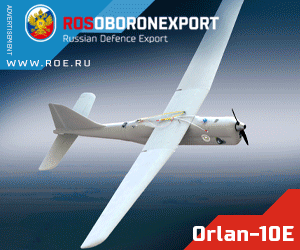By Bikram Vohra

The number of IAF squadrons is well below its authorised strength, but it is better to retire the ageing aircraft, and instead of replacing the squadrons number by number, go in for more advanced, lethal platforms
The Indian Air Force currently has a tad less than 30 squadrons with 1,960 assorted aircraft. The authorised strength is 42 squadrons, so that gives a good idea of how behind the curve we are.
But is it time to reassess this moan and groan mindset and opt for quality, rather than quantity.
Even as the INS Vikrant is launched officially with its 14 MiG 29s the question really is do we need all 42 squadrons or is it more valid to patrol twin borders with a lean, mean more relevant fleet even if the airframes are few. Obsolete aircraft are sitting ducks and scarcely intimidate either China or Pakistan.
We have to invest in aircraft that take on China’s J20 Mighty Dragons and Pakistan’s J10C Vigorous dragons given to them by China. Like for like.
Perhaps rather than try to build up what is a hotchpotch strength of multiple aircraft it is better to limit ourselves to the current 32 squadrons and stop worrying overly about being far below the 39-squadron danger mark.
In a world where UAVs, unmanned drones turning into delivery systems, missile domes like the S400 actually increasingly limit the multi-roles of fighters this is where some lateral thinking makes sense.
The neglect and the dependence on Russian equipment and the fall back on the aging MiG 21 even faster the 1971 conflict now threatens to reduce the strength even further. Next month one of the four remaining squadrons will be farmed off and the other three will end an era over the next three years. First inducted in 1963 the last 60 years, over 400 MiG-21s have crashed since then killing over 170 pilots, according to data from the Ministry of Defence. It is currently called the flying coffin for no fault of its own. Also creaking are the Jaguar and MiG 29 fighters which will have to be phased out. We could drop to as low as 26 active squadrons before building up with the induction of the 36 Rafales.

What Then Is The Solution?
In the light of these gaping holes and the need for newer fourth generation replacements, India has been looking for options under the Make in India initiative. The F21 is being strongly marketed by Lockheed Martin with the company already camped in New Delhi under the command of Michael Kelly(VP-India, Aeronautics Strategy and Business Development) who has been quoted as saying, what is unique about the F21 is an advanced cockpit to enhance their operational capability.
Currently, we fly the Hawk, MiG-21, MiG-27, MiG-29, Jaguar, Mirage 2000, Su-30MKI and Tejas as well as 35 of the 36 Rafales IAF is scheduled to have.
This variety demands a huge expense in maintenance, engineering and support systems. Older planes require tender, loving care and it costs. Many of the older aircraft, notably the MIGs, are costing the lives of young pilots during routine and training sorties. The aim today should be to augment the fleet with the fifth-generation aircraft that can hold the fort, so to speak, against two hostile forces.
As things stand, India needs the 83 Tejas MK1A in order with the more powerful F414 engines to be delivered as per schedule. The Lockheed Martin F21, a fierce update of the Fighting Falcon F-16 is a strong contender for at least 110 frontline fighters Apart from the three squadrons of tired MiG-21s we also must replace the 125 Jaguars and around 85 MiG-27MLs still in IAF service.
The news of India looking at the six ‘white swans’ or Russian made Tu-160 strategic bombers to offset the threat from China’s incursions close to Indian air space with its H-6 bomber now possibly complimented by the stealth H-60 is sensible. A strategic bomber is a medium to long range penetration bomber aircraft designed to drop large amounts of air-to-ground weaponry onto a distant target. Only the US, Russia and China have them. Strategic bombers are designed to fly into enemy territory to destroy specific strategic targets. This addition will give India sharp teeth.
The Rafale is also in contention for the replacement although if there is a licence for the F-35 India would be remiss in not making a bid for at least two squadrons. As far as the carrier fleet is concerned a purist might not look beyond the F18 Super Hornets keeping in mind the relatively outdated technology and size of the Vikrant fight deck. The Hornets have done yeomen service on US carriers and are still a force.
Boeing is looking to steal a march on the competition though nothing is final yet. The Hornets, seen as twin-engine, carrier-capable very viable option could well be our best bet. The 7000 lb heavier Super Hornet has a longer range and being on the cutting edge has low maintenance demands as compared to the older Mcdonnell Douglas F 18 Hornets.
The F/A-18 Super Hornet is fully compliant with INS Vikramaditya and INS Vikrant aircraft carrier requisites, according to Boeing, the fighter jets will be able to operate from the slant deck and is hangar to take off capable. In August this year Boeing upped the ante and has made a very strong pitch with the carrier angle at its epicentre and that might just winkle past the post against the equally adept F-21.
In fighter planes, we have put our money on the Su30MK1s with 240 of the ordered 272 already in service. Our frontline needs to be given more muscle. Though the aircraft has had a troubled start, the Sukhoi Su-57 is a Russian-made fifth-generation multi-role fighter designed to destroy all types of air, ground and naval targets and Russia would be willing to give it to us. Add to this the F-21 specifically configured for the Indian Air Force, it strengthens India’s path to an advanced airpower future. Lockheed has truly offered to pull out all stops to get this deal through with India.
In its quite reasonable self-sell Lockheed Martin says: “The F-21 addresses the Indian Air Force’s unique requirements and integrates India into the world’s largest fighter aircraft ecosystem with the world’s pre-eminent defence company. Lockheed Martin and Tata would produce the F-21 in India. It is a new aircraft with a new cockpit display, a larger airframe spine to electronics and a new infrared sensor and refuelling probe.”
The longer we wait the more porous our air defence remains and that won’t help the nation sleep well at night.
Bikram Vohra is a Consulting Editor at IA&D


